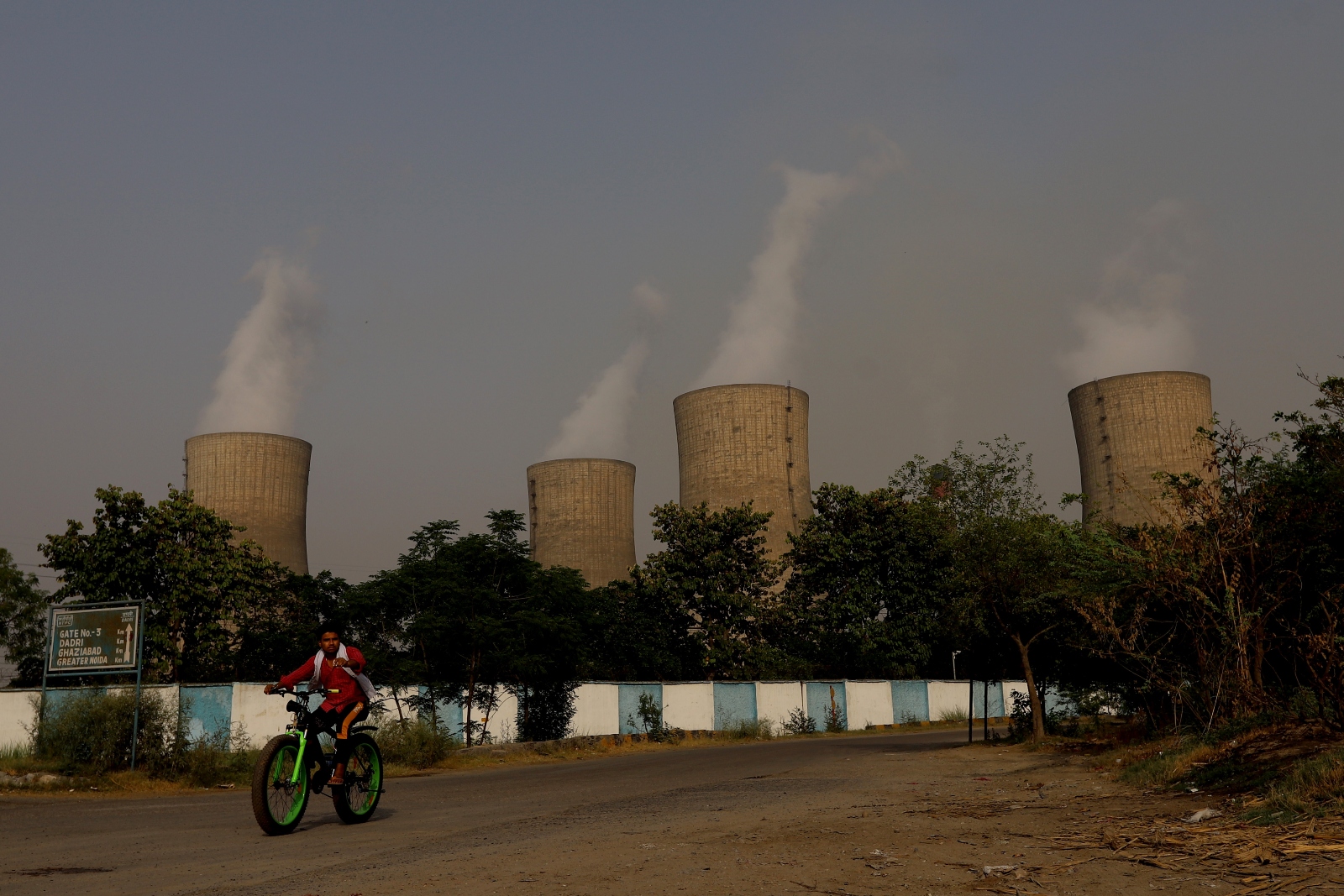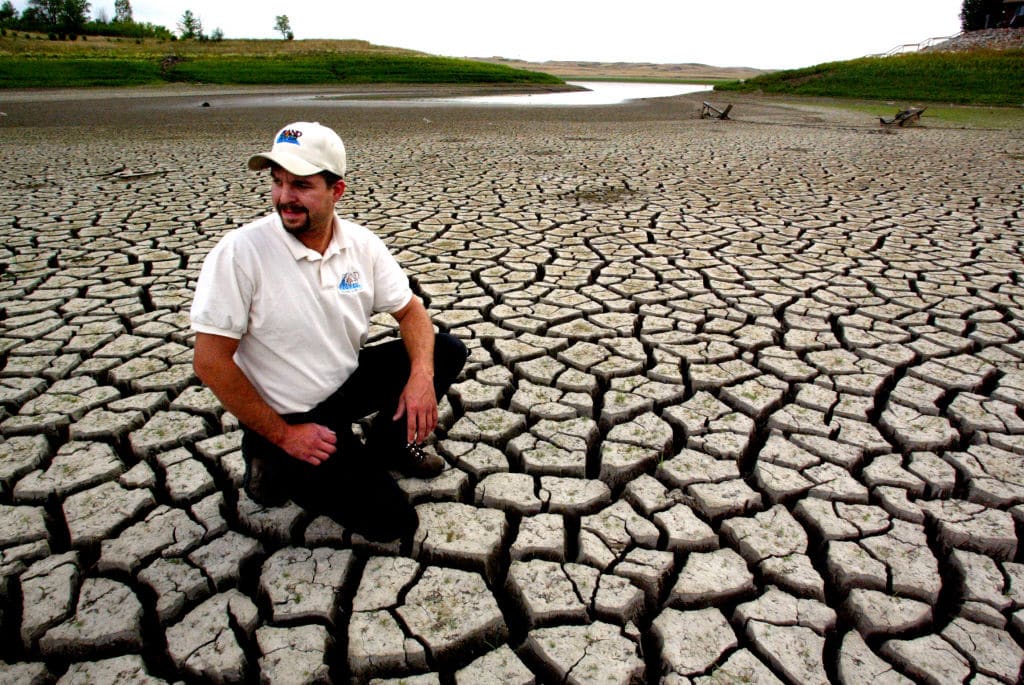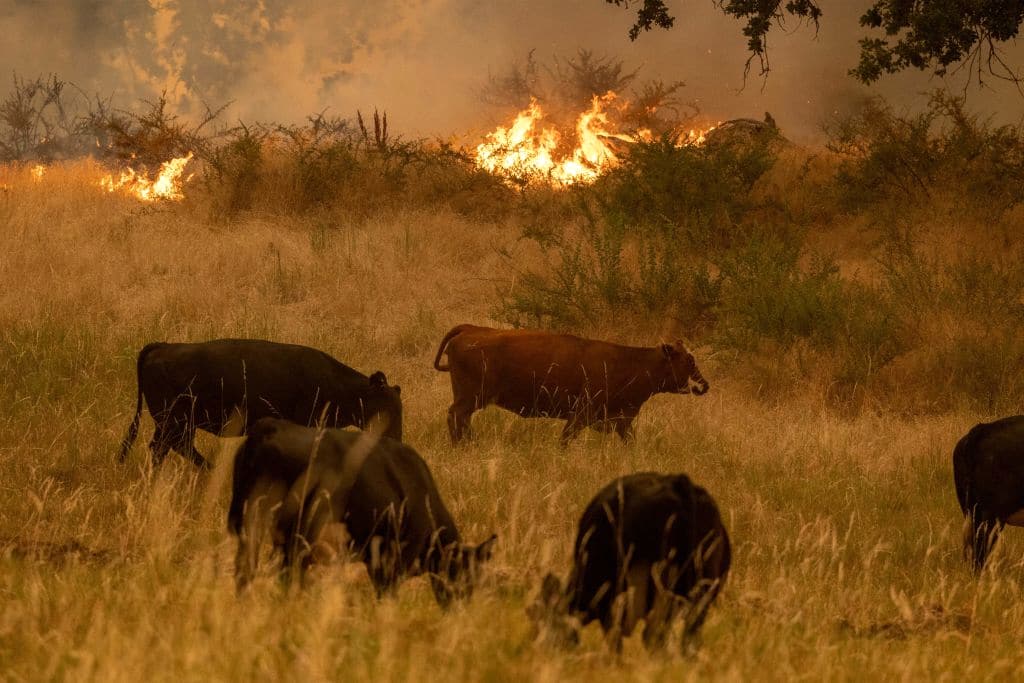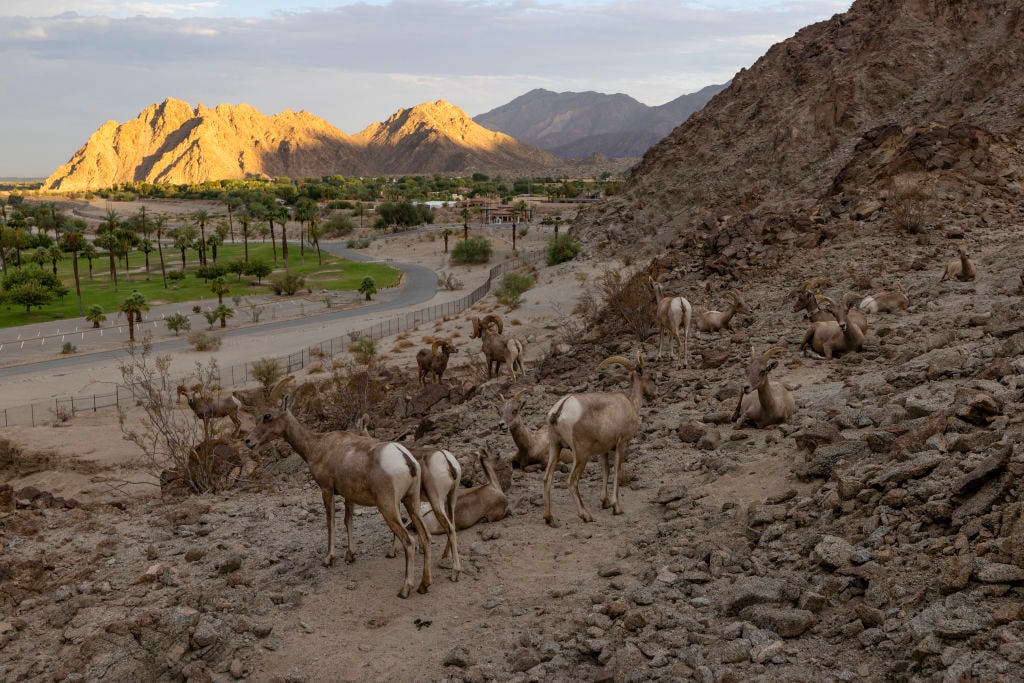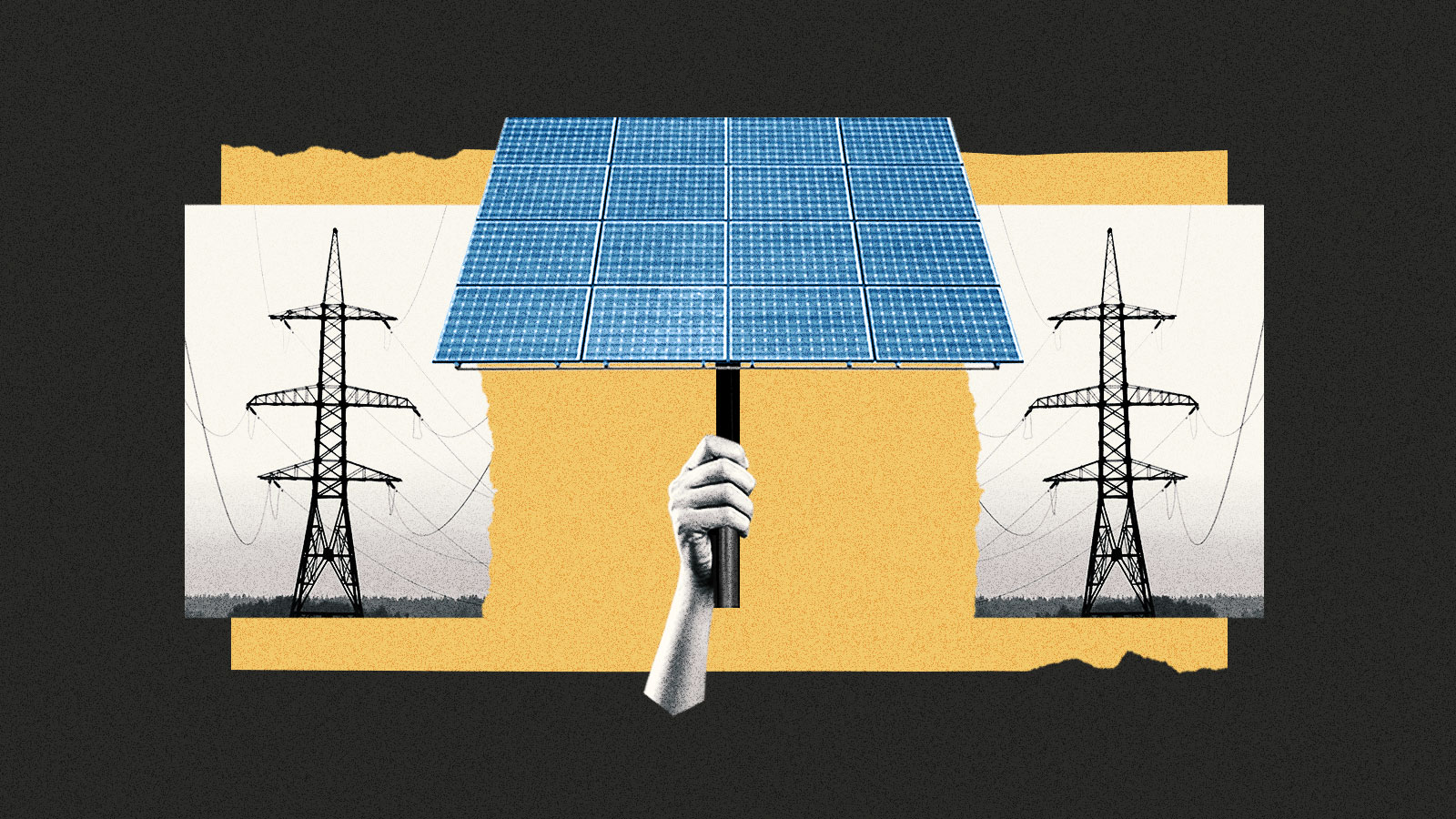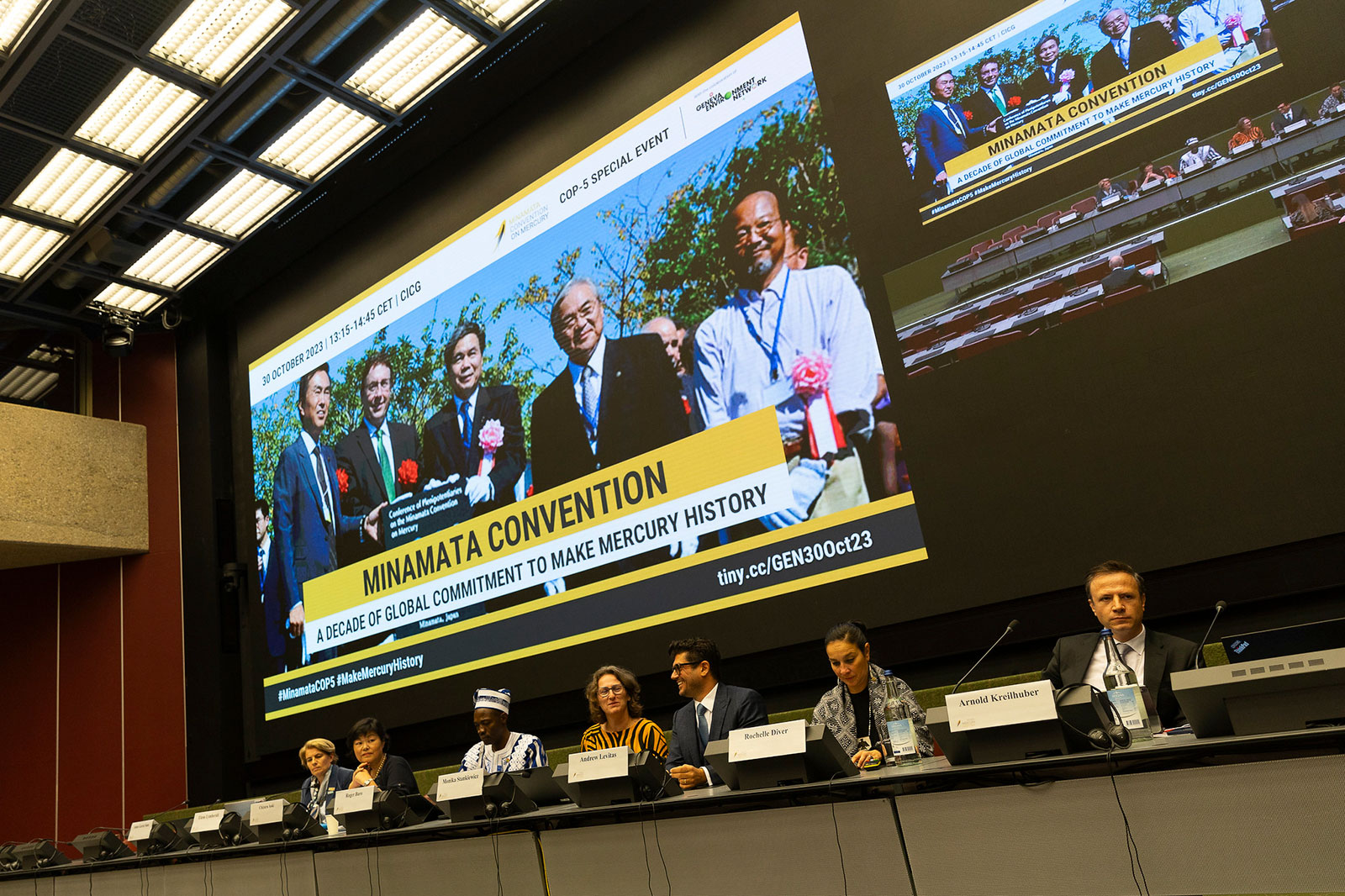
The negotiations produced no particularly big wins. There is still no agreement on a common, global method to measure and identify mercury-contaminated waste from industrial sources, like chemical manufacturers or oil and gas operators. Mercury can still also be purchased online and traded internationally, and states could not agree on when to pull it from tooth fillings.
But there were some successes: Nations have agreed to ban the use of mercury as a preservative in cosmetics by 2025 as well as to increase support for Indigenous peoples in future negotiations.
Mercury — the silvery, highly toxic heavy metal — still poses a serious environmental and health threat around the world, and last week, world leaders met in Geneva for five days of negotiations in a bid to control mercury pollution, trade, and use. Mercury is used in a range of products including skin-lightening cosmetics, batteries, fluorescent lighting, pesticides, and dental amalgams to fill cavities. It’s also a byproduct of coal-fired power plants and waste incineration.
A decade ago, the United Nations adopted the Minamata Convention on Mercury to eliminate the effects of the chemical on people and the environment. Named after Minamata Bay in Japan, where mercury-tainted wastewater poisoned more than 2,000 people in the 1950s and ’60s, the debilitating illness was dubbed Minamata disease with symptoms including hearing and speech impairment, loss of coordination, muscle weakness, and vision impairment. Exposure to mercury produces significant, adverse neurological and health effects, especially in fetuses and infants. Human exposure to the chemical typically comes from eating contaminated fish where the chemical bioaccumulates, dental amalgams, and occupational exposure at jobs where mercury is present, like in mines, waste facilities, and dentists’ offices.
The goal of the Minamata Convention, which was adopted in 2013 and became legally binding in 2017, is to eventually eliminate the use of mercury. The convention has led to the phaseout of a wide range of products that contained the chemical, like batteries, compact fluorescent lights, pesticides, thermometers, and other measurement devices, while industrial processes that relied heavily on mercury, like the production of chlorine, are now almost nonexistent. Today, the world trade in mercury has dropped significantly.
But there is still demand for the chemical. The biggest driver of the mercury market by far is artisanal and small-scale gold-mining operations, where one of the fastest, most cost-effective ways to extract gold from ore is to mix it with mercury, separating gold powder and flecks from low-quality deposits. Artisanal and small-scale gold-mining operations account for nearly 20 percent of the world’s gold supply, which means the rise and fall of the mercury trade is driven by demand for gold.
These operations are particularly prevalent in the Amazon, Indonesia, and western Africa, and release 35 percent of all mercury pollution to the environment, creating newly toxic sites at rates that vastly outpace cleanup efforts and impacting both Indigenous peoples as well as local communities. Representatives from Latin American, the Caribbean, Australia, and Canada noted that both Indigenous peoples, as well as local communities, are particularly vulnerable to mercury exposure and are among the first to face serious health and environmental impacts from mercury pollution owing to their close relationships with the environment.
Grassy Narrows First Nation in Ontario, Canada, for instance, has seen three generations of mercury exposure. In the 1960s and ’70s, a paper mill dumped nearly 10 tons of mercury into the river the First Nation relies on for fish. A recent study linked high rates of attempted suicide among Indigenous youth to intergenerational mercury exposure. In California, historic mines leftover from the gold rush in the mid-1800s pose public health, land management, and environmental challenges to tribal, state, and federal agencies.
Where countries have banded together to tackle the issue of mercury, reaching international consensus is, unsurprisingly, difficult. No consensus could be made on the question of mercury-waste thresholds: how much mercury can be in waste that countries export.

The agreement made this last week is 15 milligrams per kilo, and while experts say the number is tolerable for the time being and could likely come down in the future, the greatest concern among advocates is around the adoption of an “opt-out clause” around waste.
“What that’s done is open the floodgates for any country, if they don’t want to use 15 milligrams a kilo, to use any threshold they like, any measurement technique they like, any classification system they like,” said Lee Bell, policy advisor for the International Pollutants Elimination Network. “It’s now, effectively, a free-for-all where any country can declare, or not declare, certain types of waste to be mercury waste.”
According to Bell, this has massive impacts on the movement of waste across international borders.
Say a country in the Global North has set a mercury threshold limit of 25 milligrams per kilo. That number is deemed safe because the country in question has effective waste-management measures in place that protect the environment and human health. Because of these standards, if this country exports waste that tests at, say, 20 milligrams per kilo, they don’t have to declare it as mercury waste. It’s safe, by national standards.
That makes it possible to ship to a country in the Global South where the threshold may be significantly lower, like 15 milligrams per kilo. But because the country of origin doesn’t have to label its exported waste as mercury waste due to its own national standards, the country receiving the waste doesn’t know what’s in it.
“It pushes the onus onto the importing country to spend the money to do the testing once the material has already arrived,” said Bell. “If 15 milligrams a kilo was applied in the country of export and the country of import, they would both know what material they were dealing with, it’s apples and apples.”
The opt-out effectively derails any legally binding language in the treaty and undermines the agreed-upon 15 milligram threshold, but is helpful in illustrating the divide at meetings like this: Countries in the Global North tend to have interests rooted in economic interests and industries, while those in the Global South are typically more concerned about protecting their citizens from those Northern interests.
Then there’s the matter of dentistry. Mercury is still used in tooth fillings, and in the United States, some of the most common recipients of dental amalgams are low-income children of color, prisoners, members of the military, and Indian Health Service patients. While the science behind the safety of these fillings has been inconsistent, to date, nearly 40 countries have generally banned the use of dental amalgams or set hard dates of complete phaseouts, while another 40 have phased down the use of mercury fillings in children under 15 years old, as well as pregnant and breastfeeding women. Stopping the use of dental amalgams would also have impacts on the supply chain.
While most countries, including the U.S., are working to phase down dental amalgam use, this COP5 did not produce hard dates for a complete phaseout, although one positive outcome is that states must now develop plans on how they will phase down mercury fillings and report back to the convention.
But more broadly, one reason many countries have failed to make progress on this concerns the possibility of litigation.
“It comes down to this issue of admitting that it was harmful all along,” said Bell. “There’s a strong defense of the current position, so what you’re seeing is more of an incremental position where they want to phase it down and slowly bring supplies down over time.”
In the long run, that means there is no firm date on when that might take place and won’t be discussed until the next round of negotiations in two years.
There was one bright spot this week though: World leaders agreed to broaden the participation of Indigenous peoples at future meetings, acknowledging that the impacts of mercury, particularly due to mining, have disproportionate impacts on Indigenous peoples. It’s a vague reference to the potential for a funding mechanism to get more Indigenous peoples to future negotiations, but a significant one for future representatives.
“We’re encouraged that there is increased support from states, as well as recognition of our unique political status,” said Rochelle Diver, U.N. environmental treaties coordinator for the International Indian Treaty Council. “Indigenous peoples are disproportionately impacted by legal and illegal gold-mining, making future generations intensely vulnerable to mercury’s toxic legacy.”
The next meeting will take place in 2025.
This story was originally published by Grist with the headline Mercury is still an environmental threat on Nov 9, 2023.


